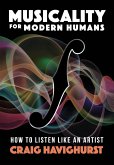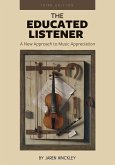The musical writings of scientist Hermann von Helmholtz (1821-94) have long been considered epoch-making in the histories of both science and aesthetics. Widely regarded as having promised an authoritative scientific foundation for harmonic practice, Helmholtz can also be read as posing a series of persistent challenges to our understanding of the musical listener. Helmholtz was at the forefront of sweeping changes in discourse about human perception. His interrogation of the physiology of hearing threw notions of the self-possessed listener into doubt and conjured a sense of vulnerability to mechanistic forces and fragmentary experience. Yet this new image of the listener was simultaneously caught up in wider projects of discipline, education and liberal reform. Reading Helmholtz in conjunction with a range of his intellectual sources and heirs, from Goethe to Max Weber to George Bernard Shaw, Steege explores the significance of Helmholtz's listener as an emblem of a broader cultural modernity.
Bitte wählen Sie Ihr Anliegen aus.
Rechnungen
Retourenschein anfordern
Bestellstatus
Storno









